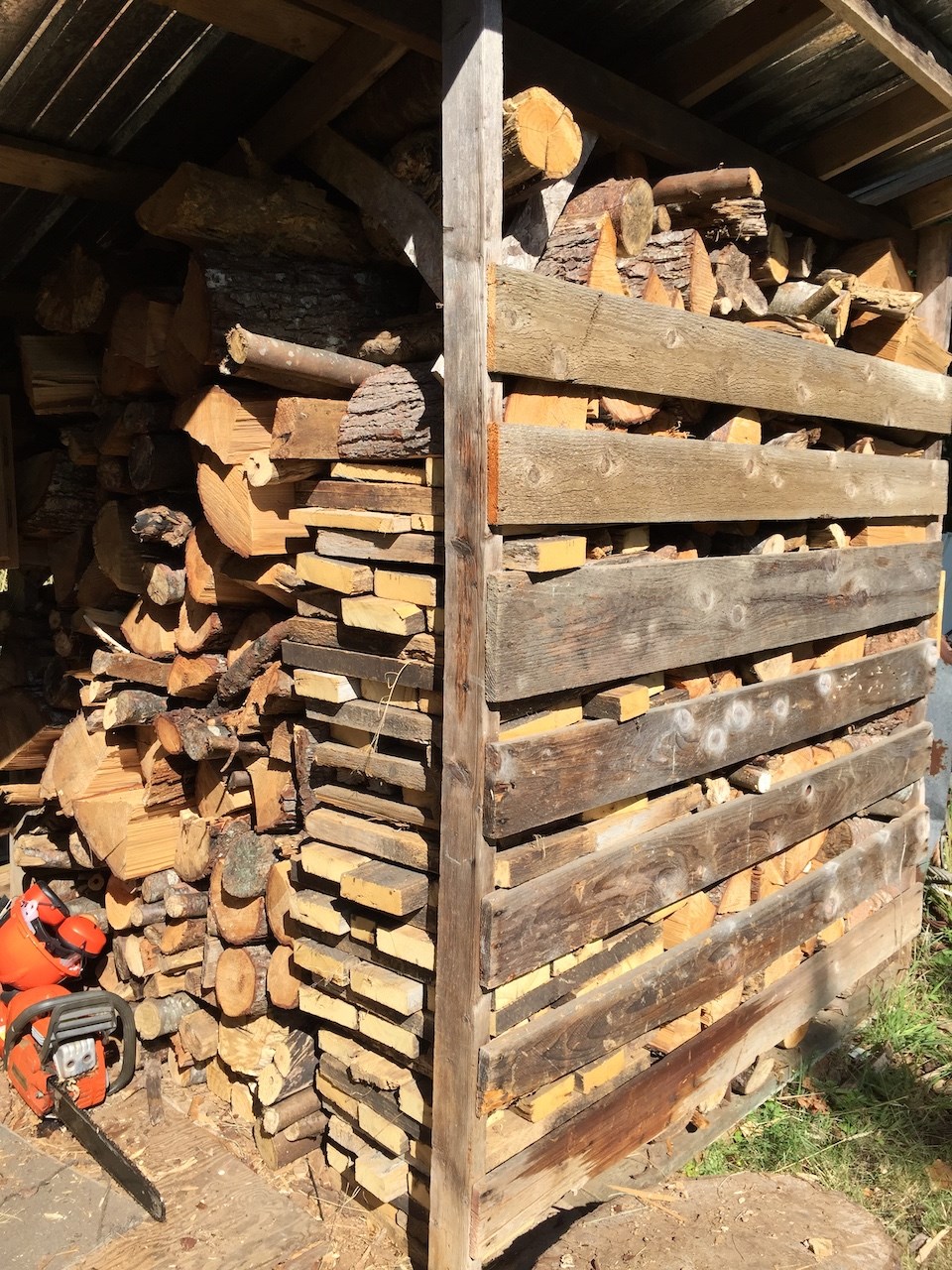“Hey, you’re part of the one per cent club,” Carol says as I proudly show off my woodshed. She explains that the one per cent club is dedicated to Boweners who have their wood supply in before the start of fall. It is my first time in the one per cent club, I feel pretty proud.
I have been part of the 40 per cent club, those who manage to get their wood in prior to the rains and in the 59 per cent club––those hacking away in the middle of winter getting enough wood to keep the home somewhat close to a reasonable indoor temperature. The last group is not fun to be in. It usually involves rainy days in the woods with a chainsaw, drying wet wood in the living room and putting up with “I told you we were going to run out of wood” comments.
Our family has been exclusively heating with wood since moving to Bowen. It is our only source of heat. While I may complain about the yearly ritual of finding, cutting, chopping and stacking wood, there is a lot of enjoyment in squirreling away wood during the year. Heating with wood is not only a huge money saver, we barely have a hydro bill, it is also very rewarding being off the home heating grid, doing it on your own. That being said, using wood as fuel does come with a bit of pre planning. Here are some lessons I have learned over the years.
1) Start early, you will need to identify your source of wood. If you are lucky to own some property you may already have a steady wood supply. I have lots of dead standing trees and have been lucky to always have a steady supply. If you are on a smaller piece of property you may need to get a bit creative on sourcing wood supplies. Keep an eye open for fallen trees, many islanders would be happy to get rid of them. Scraps on work sites is another great source as is getting in touch with some of the tree servicing companies on island that may be looking to discard cut down trees. Most people don’t heat with wood and getting rid of it is often a hassle, not for you of course.
2) Pace yourself, do a little every month, start early and split the tasks up into manageable chunks. This is especially important if you are a bit “aged.” Cutting and collecting wood is physical and you don’t want to wreck your body and suffer an injury doing it all at once.
3) Get a good chainsaw and treat it with care. This was one of my early learning lessons. While chainsaws look very robust they can be remarkably finicky. I was pretty rough on my earlier saws using old fuel, old transmission oil for the bar oil and cutting dirty logs and hitting the ground with the blade. There is nothing worse than a dull chain, it is amazing how easy it is to dull a chainsaw blade. Even a slight nick on a rock can completely dull your chain. This is unlike a circular saw where you can pretty much cut right through nails, not so with a chainsaw.
4) Learn how to properly direct the fall of a tree. It is not fun to watch that dropping tree take out your newly erected deer fence. I speak from experience on this one.
5) Make sure to cut the rounds so they will fit in your stove. Having to re-cut wood doubles your workload and is a real pain.
6) When splitting rounds (I’m still too stubborn to admit I may want to consider a splitter) remember, you are not cutting but splitting with an axe. Axes don’t cut. Start by going down the middle of the round, once it is split in half the rest is easy. Avoid the knots and remember a knot never goes through the centre of a round so take your time and aim for the middle. You will run into that round that just won’t split and while it may be difficult at times to give up on it while you may eventually win the battle you may be better giving up on it at some point. You can always slice the round in half with the chainsaw.
These are just some of my learnings and I’m sure lots of island woodchoppers have other tidbits of advice.
If you are just starting now for the winter season, get going and avoid the dreaded 59 per cent club.



